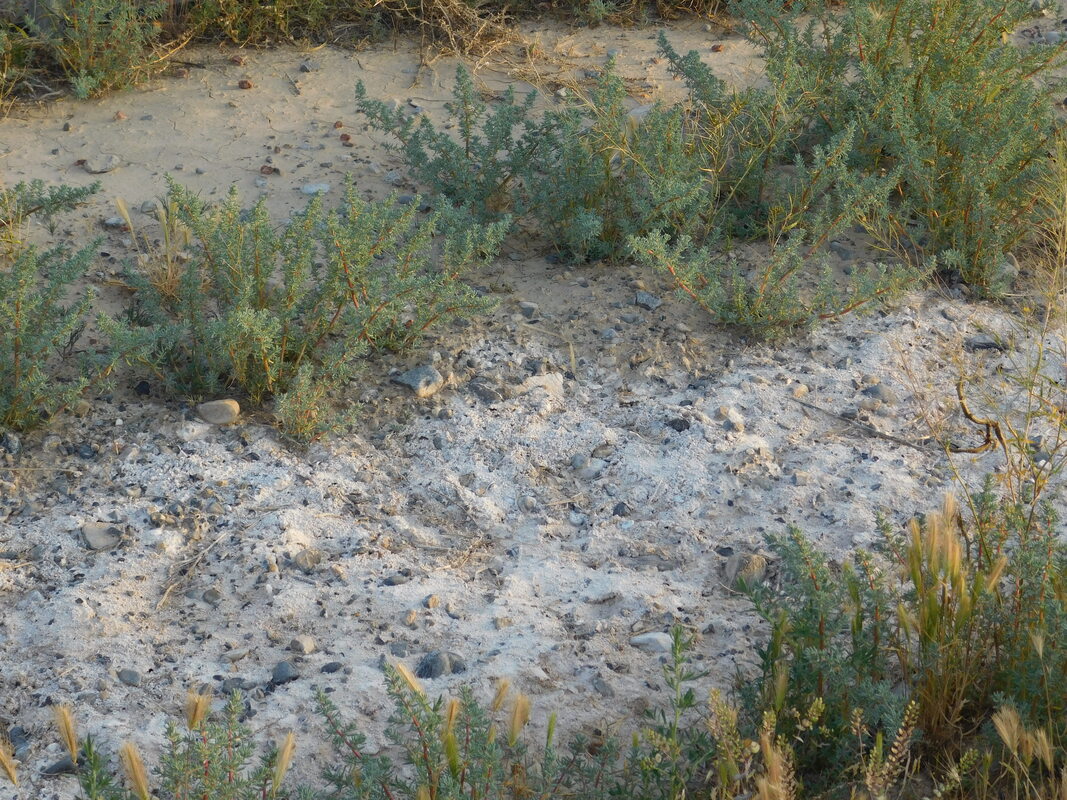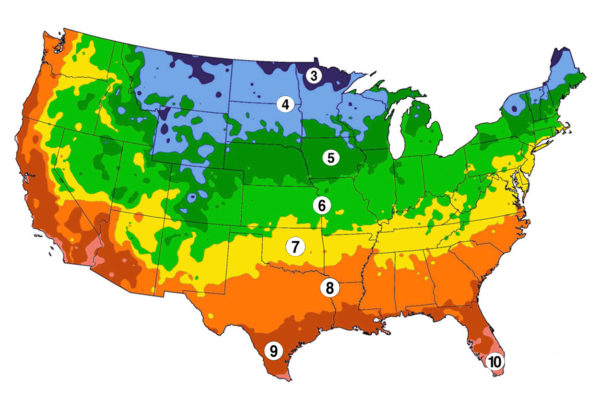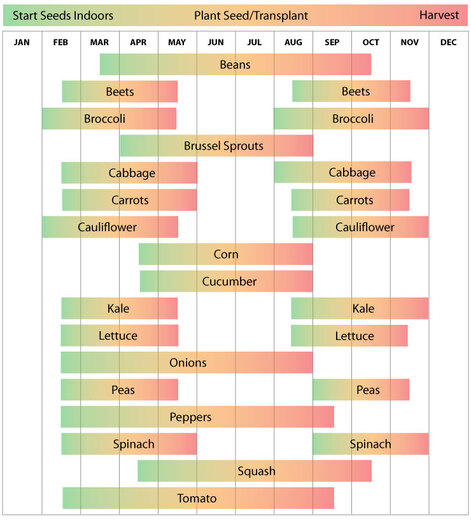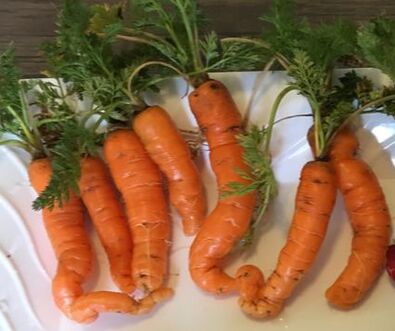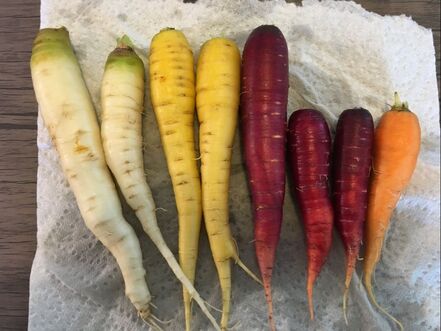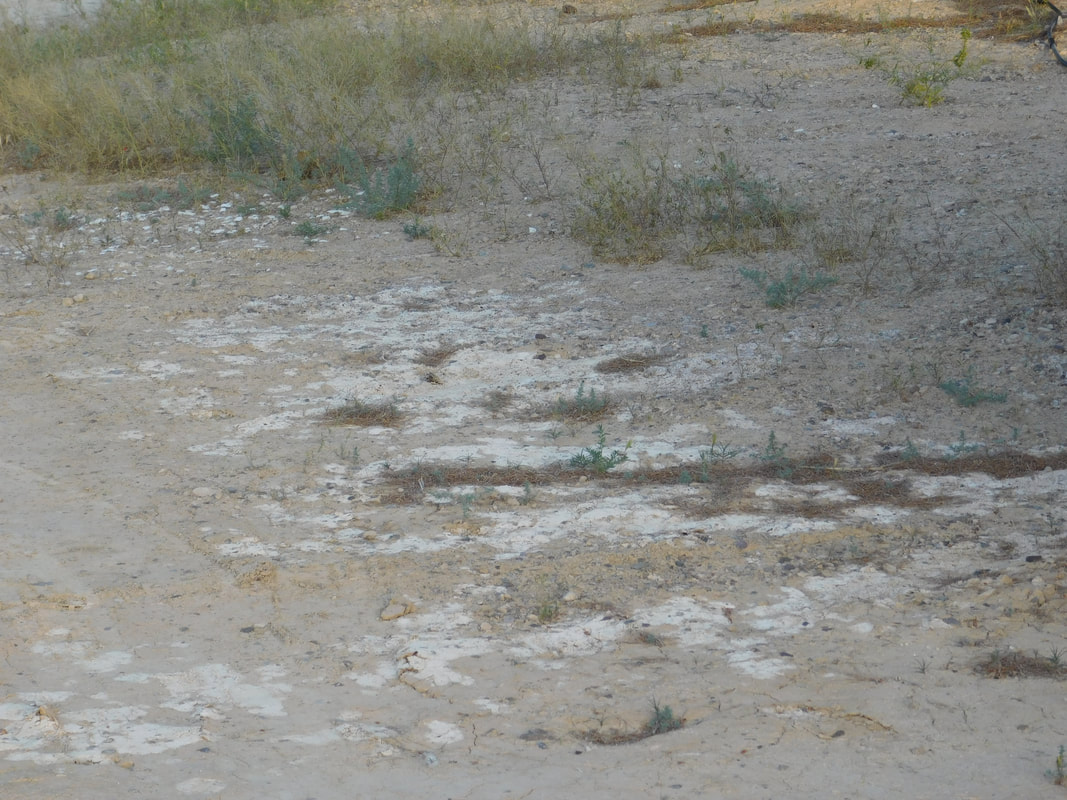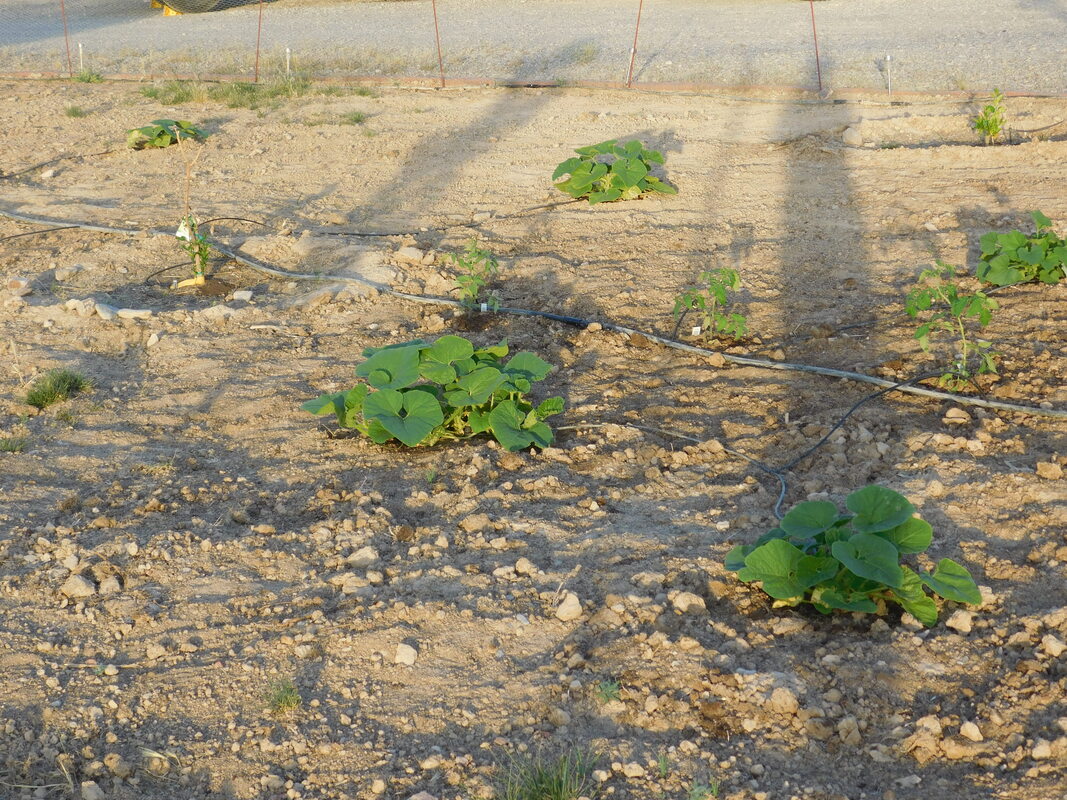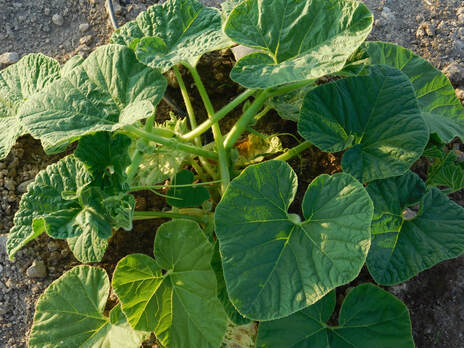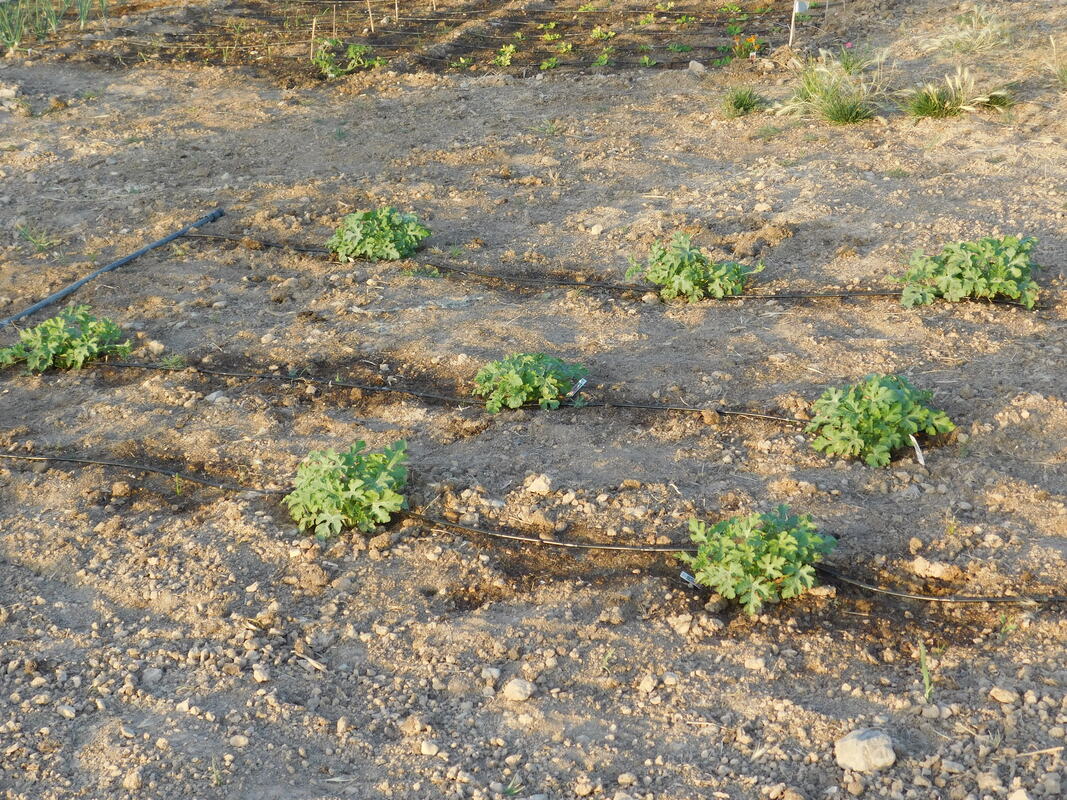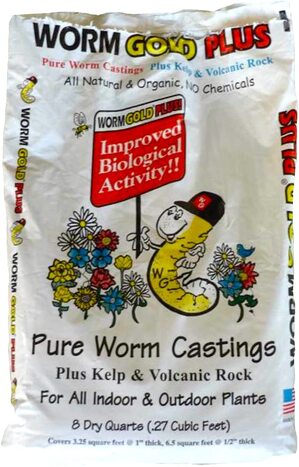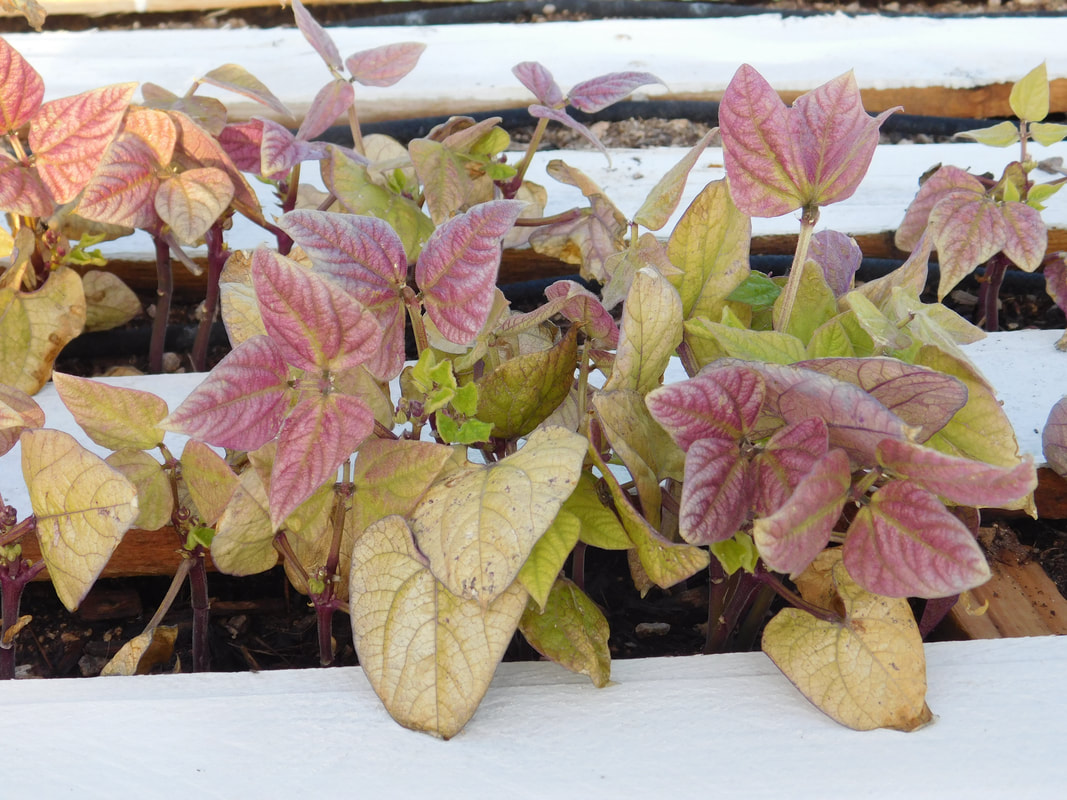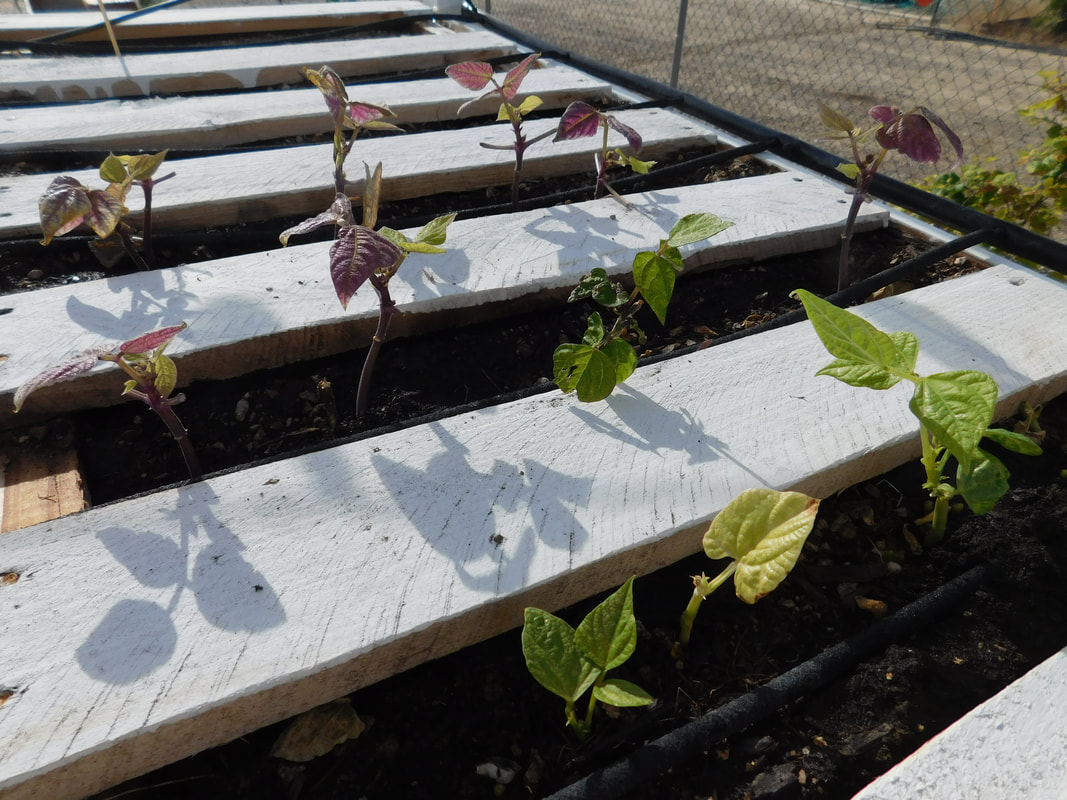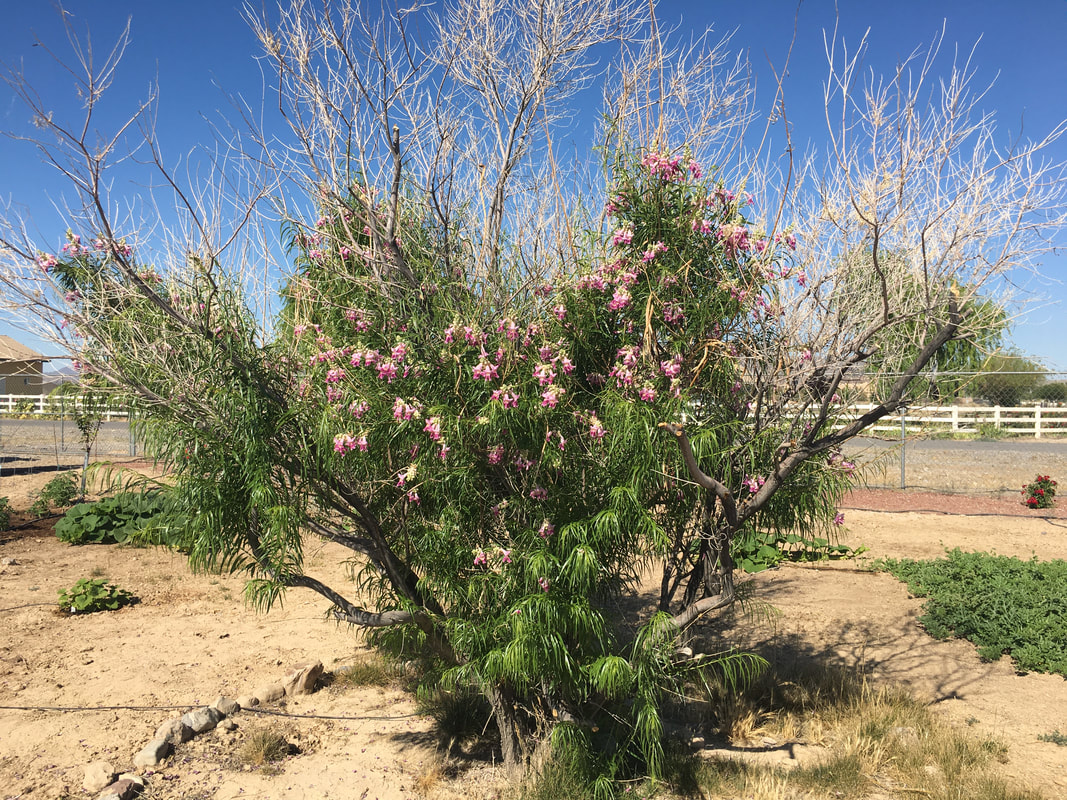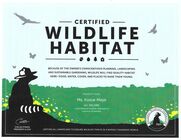Desert Land... Where do I start?
Here in the high desert, our USDA Plant Hardiness zone is 8a. According to my research here is what we've got to work with compared to US averages:
Climate in Pahrump, Nevada***
Summer High: The July high is around 102°F degrees
Winter Low: The January low is 31°F
Rain: Averages 5 inches of rain a year (The US average is 38 inches of rain per year.)
Participation: 26 days per year
Snow: Averages 0 inches of snow a year (The US average is 28 inches of snow per year.)
Sunny days: On average, there are 285 sunny days per year in Pahrump. The US average is 205 sunny days.
Wettest Month: February
Driest Month: June
Wind: The average daily wind speed in August has been around 15 km/h, that’s the equivalent of about 9 mph, or 8 knots. In recent years the maximum sustained wind speed has reached 70 km/h, That’s the equivalent of around 44 mph, or 38 knots.
The growing season in Pahrump typically lasts for 9.0 months (274 days), from around February 24 to around November 23, rarely starting before January 23 or after March 21, and rarely ending before November 7 or after December 11.
But let's consider global warming, and take a look at the last year's weather highlights. I know it's much hotter and colder than the "average". There are a lot of things that you need to consider. All it takes is 1 scorching hot day or really cold morning to kill your entire garden. I've lived it, cried about it!
Summer High: Highest recorded temperature in August has been 51°C that's 124°F,
Winter Low: In recent times the highest recorded temperature in December has been 31°C that's 88°F, with the lowest recorded temperature -14°C, about 6°F.
***Above information is very accurate. I feel it every year! Now, that's weather. Let's look at the soil conditions.
Source: https://www.bestplaces.net/climate/city/nevada/pahrump
Soil Condition
Master Gardener Debby Woodland said the condition of one’s soil will determine whether the garden will thrive.
Woodland is a coordinator with the University of Nevada Cooperative Extension office in Pahrump.
Woodland said the soil in many parts of Southern Nevada is less fertile and contains compounds not suitable for a healthy and robust garden. “We have less than one percent organic material in our soil,” she said. “Right here in the valley, we have silty, clay soil which has high salt concentrations. When that occurs, you have water that doesn’t move freely through the soil. By adding organics, we’re going to not only build our soil, but it will help make the water more permeable.”
The Pahrump series consists of very deep, well drained soils that formed in lacustrine deposits from lake bed and offshore bar sediments derived from limestone. Pahrump soils are on lake terraces. Pahrump fine sandy loam - rangeland and wildlife habitat. Colors are for dry soils unless otherwise noted. The soil surface is covered by approximately 30 percent gravel consisting of pan fragments.
Clay content: Averages 18 to 27 percent.
Sand content: Less than 25 percent fine sand through coarse sand in the fine earth fraction.
Rock fragments: Averages 35 to 60 percent, in the form of hard calcium carbonate concretions and nodules. Rock fragment consistence is cemented through indurated.
** Source: https://pvtimes.com/community/valleys-desert-soil-needs-tlc-for-optimal-growing/
https://www.nrcs.usda.gov/Internet/FSE_MANUSCRIPTS/nevada/NV785/0/NyeSW.pdf
https://soilseries.sc.egov.usda.gov/OSD_Docs/P/PAHRUMP.html
Local Pahrumpians say we have "Poof Dirt"! Here is what my land looks like untreated. Hard to tell by looking at the picture, but when you walk on it, it is really soft, dusty, almost feels like your feet is start sinking. If you try to walk when it rains, this land will take your shoes!! Due to the fine powdery substance known as “poof dirt.” many homeowners in this town is experiencing the house is sinking.
Now that I know the challenges ahead of me, Let's talk about important keys to amended this "Poof Dirt" and grow plants in the desert.
1. Know what kind of plant will thrive in your area according to your climate, and soil condition
2. Know the planting season
3. Best method of planting (Direct sow, Raised Bed Garden, Greenhouse, Hydroponic, etc...)
4. Weather proofing
5. Soil amending method
#1 What can I grow???
If you don't know your planting zone, click here and find out. Take a look at this charts. For me, below is the planting schedule. However, there are a lot more veggies and fruits that I want to grow, so I can enjoy eating with my family!!
1. Know what kind of plant will thrive in your area according to your climate, and soil condition
2. Know the planting season
3. Best method of planting (Direct sow, Raised Bed Garden, Greenhouse, Hydroponic, etc...)
4. Weather proofing
5. Soil amending method
#1 What can I grow???
If you don't know your planting zone, click here and find out. Take a look at this charts. For me, below is the planting schedule. However, there are a lot more veggies and fruits that I want to grow, so I can enjoy eating with my family!!
I LOVE science experiment. The past 4 years, I've tried to grow pretty much everything I can think of. This year, I feel like I am coming very close to my conclusion. I talk to my local farmers and gardeners to see what they grow successfully, and what they can't.
Here is what I have tried:
Leafy Greens, Brussel Sprouts, Broccoli, Cabbage, Collard Greens, Cauliflower. They are Brassica family, and aphids and white fly LOVE them! I HATE BUGS!! I had some serious fight with aphids for the past 3 years. Personally, I do not like to use chemical to treat the pests, so I've been losing the battle. I almost gave up!
Roots Vegetables: Potatoes, Carrots, Beets, Garlic, Onion, Radish, My conclusion is this; I have to find softer /loose soil. Here in the desert, when you start watering the ground, it gets harder and harder, and harder... I learned that if you want to grow roots vegetables big, you need to make sure to plant these in better and loose soil, and weed out excess plants Especially for carrots! If you don't, your carrots will be curled up and so small like picture below.
Here is what I have tried:
Leafy Greens, Brussel Sprouts, Broccoli, Cabbage, Collard Greens, Cauliflower. They are Brassica family, and aphids and white fly LOVE them! I HATE BUGS!! I had some serious fight with aphids for the past 3 years. Personally, I do not like to use chemical to treat the pests, so I've been losing the battle. I almost gave up!
Roots Vegetables: Potatoes, Carrots, Beets, Garlic, Onion, Radish, My conclusion is this; I have to find softer /loose soil. Here in the desert, when you start watering the ground, it gets harder and harder, and harder... I learned that if you want to grow roots vegetables big, you need to make sure to plant these in better and loose soil, and weed out excess plants Especially for carrots! If you don't, your carrots will be curled up and so small like picture below.
Last year, I have tried Cucumbers, Zucchini, Squash, Pumpkin, Watermelon. All failed. I can think of 3 possible reasons.
1. Watering: I was watering too much, and leaves were getting wet. In results of that, there were fungus, and root rot, plus leaf burn from strong sun light.
2. Too much sunlight: Instruction on the tag says " FULL SUN" so I did. It died! They direction's "FULL SUN" doesn't mean full sun like out here! Too much sun light will scorch them!
3. Not enough "friends" in their neighbor: If I plant 1 or 2 of the same kind, it will less likely to get good yield due to lack of pollination. So stop being so cheap and buy a bunch of them, and transplant them on the ground!
So This year, I fixed all of the problems, and already doing good! Look at the picture! This is week 3 on the ground! No Miracle gro, no added chemicals. Just well rested poof dirt with horse manure, organic materials and the amendment.
1. Watering: I was watering too much, and leaves were getting wet. In results of that, there were fungus, and root rot, plus leaf burn from strong sun light.
2. Too much sunlight: Instruction on the tag says " FULL SUN" so I did. It died! They direction's "FULL SUN" doesn't mean full sun like out here! Too much sun light will scorch them!
3. Not enough "friends" in their neighbor: If I plant 1 or 2 of the same kind, it will less likely to get good yield due to lack of pollination. So stop being so cheap and buy a bunch of them, and transplant them on the ground!
So This year, I fixed all of the problems, and already doing good! Look at the picture! This is week 3 on the ground! No Miracle gro, no added chemicals. Just well rested poof dirt with horse manure, organic materials and the amendment.
Year 2020, Here's the list of what's going on right now in my garden.
Beans, Peas, Cucumbers, Zucchini, Squash, Pumpkin, Watermelon, Peanuts, Garlic, Onion, Potato, Celery, Peppers of all kind, Spinach, Corn, Sunflower, Okra, Artichoke, and all kinds of Herbs. I had different problems with each of them before. I will talk about how I improved it later. They are all doing great so far.
#2. Know the planting season
You can look at the planting schedule as a guide. But the most important thing is to avoid growing plants that will not thrive in frost. Here in Pahrump, First frost date is December 1, Last Frost date is April 1st. However, don't buy into that! Check your local weather all the time. Past 2 years, my tomatoes and peppers got all destroyed by frost at the top of November! Another suggestion is to visit your local nursery often and talk to them! They know what and when to plant. Sometimes, they hold back selling plants and not even stock them in store because they know that there's one more frost waiting for you! When they start getting new stuff, you better get ready!!
#3. Best method of planting (Direct sow, Raised Bed Garden, Greenhouse, Hydroponic, etc...)
My first question. Do you have wild animal problem? They are sure enough cute to look at them, but when I find out that they are the one destroying my plants, Oh No! I ran and got my BB Gun! We got rabbits, ground squirrel, rats, gopher... they are EVERYWHERE!
They love to destroy my green beats, snow peas, carrots... I have a fence around my garden, but they dig underground and come up in the middle of the field. Ain't nobody got time for that! So you know what I did this year? I built super raised bed garden! 4 foot off the ground! See if they can beat that!! my beans and peas are doing good! In the midst of that, I found out something! They don't like rosemary for real! Carrots that were growing inside of the rosemary bush, those were safe from the elimination! Ha! So remember to grow carrots in container that the rodents can't get to, or grow right next to rosemary. Rosemary is excellent pest repellent, and very easy to grow.
Last year, I did my science experiment on Hydroponic Vs. Soil. Never again! I will not do Hydroponic in summer! Unless you spend a lot of time and money to build a Hydroponic system, which is possible, by 3PM, water in the bucket will be like boiling hot and it will kill the plants! Hot water damage is as bad as frost damage! Just stick to soil!! Much cheaper!!
4. Weather proofing
Here in the desert, growing season come with wind! dust devil! Scorching hot! DRY! and NO RAIN! Sun light, we got it all day every day! that's not an issue here. TOO MUCH Sun is a real issue. so if you are growing tomatoes, make sure to stake it and tie down proper. Otherwise, wind will snap your plants! Make sure irrigation system is working. A lot of gardeners are using shading cloth to protecting their plants from direct sun light. I want to do it, but I am a rebel! I don't want to spend a lot of money, so I am experimenting this year by planting tall plants next to " not so heat resistant plants" and see if Sunflowers and Okra can give some natural shade for my tomatoes!! We'll see!
5. Soil amending method
Here's where you need to be careful. How much money do you want to spend? I'd like to spend as little as NOTHING!! Why should I spend $100 to grow $10 worth of tomatoes? Not worth my time nor money, right?? I am extremely impatient and frugal. I am all about minimum investment and maximum yield! I bet I spent too much money on my science experiments! I only believe what I see besides God! What I have heard was here in the desert, we should use horse manure. Not chicken manure because it become too hot. Cow manure has too much salt. I amended my poof dirt with Top soil, organic materials, horse manure, and gypsum. Mix it well, and let it rest for season or 2.
You can look at the planting schedule as a guide. But the most important thing is to avoid growing plants that will not thrive in frost. Here in Pahrump, First frost date is December 1, Last Frost date is April 1st. However, don't buy into that! Check your local weather all the time. Past 2 years, my tomatoes and peppers got all destroyed by frost at the top of November! Another suggestion is to visit your local nursery often and talk to them! They know what and when to plant. Sometimes, they hold back selling plants and not even stock them in store because they know that there's one more frost waiting for you! When they start getting new stuff, you better get ready!!
#3. Best method of planting (Direct sow, Raised Bed Garden, Greenhouse, Hydroponic, etc...)
My first question. Do you have wild animal problem? They are sure enough cute to look at them, but when I find out that they are the one destroying my plants, Oh No! I ran and got my BB Gun! We got rabbits, ground squirrel, rats, gopher... they are EVERYWHERE!
They love to destroy my green beats, snow peas, carrots... I have a fence around my garden, but they dig underground and come up in the middle of the field. Ain't nobody got time for that! So you know what I did this year? I built super raised bed garden! 4 foot off the ground! See if they can beat that!! my beans and peas are doing good! In the midst of that, I found out something! They don't like rosemary for real! Carrots that were growing inside of the rosemary bush, those were safe from the elimination! Ha! So remember to grow carrots in container that the rodents can't get to, or grow right next to rosemary. Rosemary is excellent pest repellent, and very easy to grow.
Last year, I did my science experiment on Hydroponic Vs. Soil. Never again! I will not do Hydroponic in summer! Unless you spend a lot of time and money to build a Hydroponic system, which is possible, by 3PM, water in the bucket will be like boiling hot and it will kill the plants! Hot water damage is as bad as frost damage! Just stick to soil!! Much cheaper!!
4. Weather proofing
Here in the desert, growing season come with wind! dust devil! Scorching hot! DRY! and NO RAIN! Sun light, we got it all day every day! that's not an issue here. TOO MUCH Sun is a real issue. so if you are growing tomatoes, make sure to stake it and tie down proper. Otherwise, wind will snap your plants! Make sure irrigation system is working. A lot of gardeners are using shading cloth to protecting their plants from direct sun light. I want to do it, but I am a rebel! I don't want to spend a lot of money, so I am experimenting this year by planting tall plants next to " not so heat resistant plants" and see if Sunflowers and Okra can give some natural shade for my tomatoes!! We'll see!
5. Soil amending method
Here's where you need to be careful. How much money do you want to spend? I'd like to spend as little as NOTHING!! Why should I spend $100 to grow $10 worth of tomatoes? Not worth my time nor money, right?? I am extremely impatient and frugal. I am all about minimum investment and maximum yield! I bet I spent too much money on my science experiments! I only believe what I see besides God! What I have heard was here in the desert, we should use horse manure. Not chicken manure because it become too hot. Cow manure has too much salt. I amended my poof dirt with Top soil, organic materials, horse manure, and gypsum. Mix it well, and let it rest for season or 2.
Worm Casting Power!!
|
I have tried different kind of fertilizers before, and I am trying my best to grow best food for my family by growing organic food. it's hard! This year, I want to focus on 1 thing. " Worm Gold Plus" pure warm casting! I have heard and seen so many videos about different fertilizers, it all sounds good, and looks good in well know farm land because they have better soil to begin with. but how about in the poof dirt? I think it's a true experiment, don't you think?? So I am going to put " Worm Gold Plus" to text and see how it works.
You won't believe how crazy I get with science experiment! I have planted soy beans on my super raised be garden. It's looking super sad! According to my research, when you notice a plant with purple leaves rather than the normal green color, it is most likely due to a phosphorus deficiency, and a nitrogen deficiency can be recognized by yellow leaves. This soil was amended with nitrogen at the beginning. however I suspect that either nutrients got washed away. So I am going to give a little boost! Worm Gold Plus! Let's see what happens in a week! Also I am going to thin out (4-6" apart) some plants too! |
The Heart of my garden
April 2020, This tree looked sad and looked dead. but we decided to revive this tree and hoping this tree will serve the purpose to feed the pollinator. I have small rose bushes but I knew that was not enough to take care of all of the plants around this tree. We trimmed this tree down to get rid of dead branches to see what happens.
May 2020, This Dessert Willow is absolutely beautiful, very fragrant, and attracting all kinds of bees, butterflies, hummingbirds in this garden. As a result of that, all the plants around this tree are pollinating successfully and fruiting everywhere! So, I encourage you to plant very attractive flowers or trees in your garden to support ecosystems.
May 2020, This Dessert Willow is absolutely beautiful, very fragrant, and attracting all kinds of bees, butterflies, hummingbirds in this garden. As a result of that, all the plants around this tree are pollinating successfully and fruiting everywhere! So, I encourage you to plant very attractive flowers or trees in your garden to support ecosystems.
© Paperstacks, LLC All rights reserved.
Poof Dirt Farms: 2471 Gally Rd. Pahrump, NV
Phone: 702-412-6397 Email: poofdirtfarming@gmail.com
Phone: 702-412-6397 Email: poofdirtfarming@gmail.com

